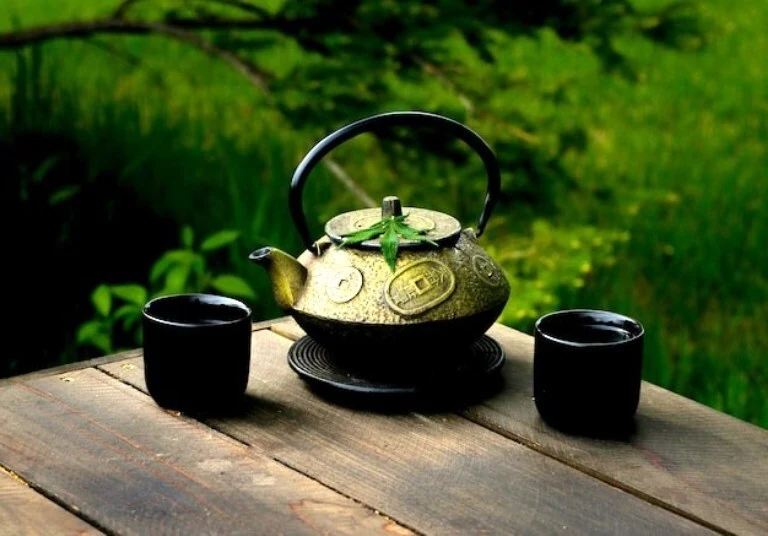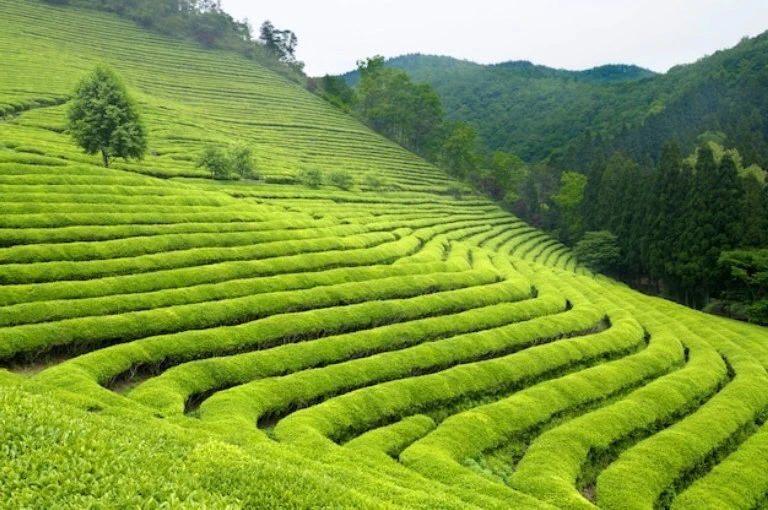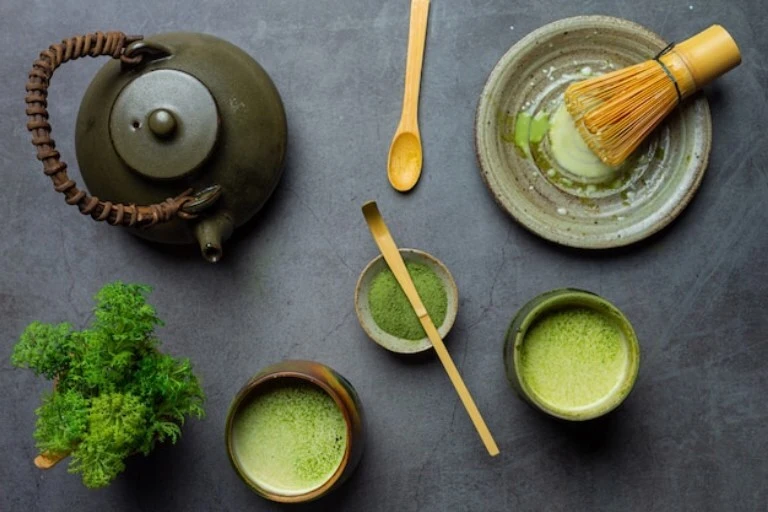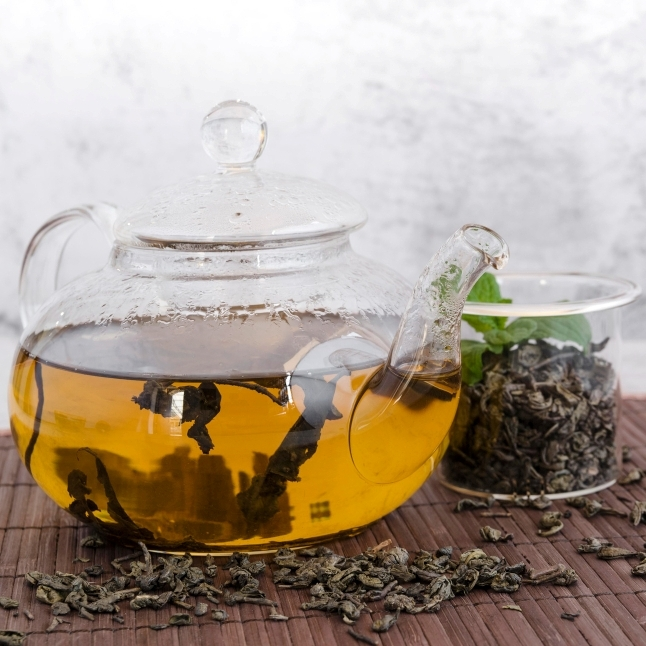Green tea is one of the most popular and beneficial beverages produced from the leaves of the Camellia sinensis plant. In this article, we will explore the history of green tea, its origins and variety of types, as well as learn about its benefits and potential drawbacks for the human body. We will also discuss the proper way to brew green tea and its use in various diets. Towards the end of the article, we will review some of the most expensive varieties of tea and draw conclusions based on the presented information.
Embarking on a Journey Through Centuries

Green tea has a rich and fascinating history that dates back to ancient times. Its origin is associated with China, where it was discovered and actively cultivated and consumed over 4000 years ago. The history of tea is closely linked to Chinese culture and philosophy, becoming an integral part of daily life for people in this country. Over time, tea spread throughout Asia and became a popular beverage in many countries around the world.
Green tea was initially discovered through the accidental observation of researchers who noticed tea leaves falling into boiling water. This event marked the beginning of the processes of fermentation and oxidation of tea, leading to the production of different types of tea. At the time of its discovery, tea was considered a luxury and primarily used for medicinal purposes. Today, this beverage enjoys immense popularity worldwide due to its unique taste qualities.
Diversity of Aromas and Flavors

Green tea is cultivated in many countries worldwide, each with its own characteristics in the cultivation and production of this beverage. The most well-known green tea-producing countries include China, Japan, India, Sri Lanka, and others.
China is the birthplace of green tea and remains one of the leading producers of this beverage. Various provinces in China cultivate diverse varieties of tea. One of the most famous Chinese tea varieties is Bilochun, which grows in the Fujian province. Bilochun is characterized by its delicate aroma and light flavor, valued for its high-quality processing.
Japan is also known for its unique green tea varieties. One of the most popular Japanese varieties is Sencha, which serves as the main tea for daily consumption. Sencha has a fresh taste and pleasant aroma. Another well-known Japanese variety is Matcha, which is ground into powder and used in traditional Japanese tea ceremonies. Matcha is distinguished by its vibrant green color and rich flavor.
India and Sri Lanka also contribute significantly to tea production. In India, one popular variety is Darjeeling green tea, cultivated in the mountainous regions of Darjeeling. It has a refreshing taste with a light bitterness.
Apart from the mentioned countries, tea is grown and produced in many other regions worldwide, including Nepal, Vietnam, Kenya, and Taiwan. Each of these regions has its own climatic conditions and soil characteristics, influencing the taste, aroma, and quality of green tea.
Green tea is the key to health and well-being.

Green tea is not only a delicious beverage but also a valuable source of beneficial substances that can have a positive impact on the human body. It is rich in antioxidants such as catechins and flavonoids, which play a crucial role in protecting the body from free radicals—unstable molecules capable of damaging cells and causing various diseases.
The antioxidants present in tea help reduce inflammation, strengthen the immune system, and protect cells from damage. They may aid in preventing the development of cardiovascular diseases by contributing to the reduction of cholesterol levels and blood pressure. Regular consumption of tea may also lower the risk of developing type 2 diabetes and certain forms of cancer, including breast, prostate, and lung cancer.
Green tea can also have a positive influence on the digestive system, promoting more efficient food breakdown and improved digestion. This can help address issues such as constipation or heartburn. Additionally, tea may contribute to a faster metabolism, assisting in weight control and maintaining a healthy figure.
Another benefit of tea is its impact on the skin. The antioxidants in tea help combat damage caused by free radicals, improving the skin’s condition, making it more elastic and radiant. Green tea can also help reduce inflammation and skin irritation, enhancing its texture.
Rules for Consuming Green Tea
It is important to note that the consumption of tea should be moderate. While most people can benefit from drinking tea, excessive consumption may lead to undesirable effects.
Green tea contains caffeine, although in smaller amounts than coffee. Therefore, excessive intake of tea can result in nervousness, insomnia, anxiety, and an increased heart rate. Individuals sensitive to caffeine are advised to consume tea with caution or opt for decaffeinated options.
It should also be considered that the beverage contains tannins, substances that can affect the absorption of certain nutrients, including iron and calcium. People with deficiencies in these substances or those suffering from anemia or other conditions related to low iron levels are recommended to consume tea in moderate amounts and consult a doctor for advice.
Furthermore, some individuals may experience an allergic reaction to tea. If you develop allergy symptoms such as rash, itching, or difficulty breathing after consuming green tea, it is advisable to discontinue its use and seek medical attention.
Finally, this tea may affect the effects of certain medications. It can interact with anticoagulants, blood pressure-lowering medications, and some diabetes medications. Therefore, it is essential to discuss potential interactions with your doctor or pharmacist if you are taking any medications.
In conclusion, tea has numerous positive properties for the body, but it is crucial to consume it in moderation and consider individual body characteristics and possible contraindications. It is advisable to consult with a doctor or nutritionist for personalized guidance.
Green tea is an inspiration for enjoyment.

To derive maximum benefits from tea, it is essential to know how to brew and consume it correctly. By following specific recommendations, you can achieve the best taste while retaining the tea’s beneficial properties.
1. Water Quality: For brewing green tea, use fresh, well-filtered, or drinking water. Avoid using stagnant or chlorinated water as they may adversely affect the taste and quality of the tea.
2. Water Temperature: Green tea requires a lower brewing temperature compared to black tea. It is recommended to heat the water to around 75-85°C. You can bring the water to a boil and then let it cool for a few minutes before brewing the tea.
3. Tea Quantity: Typically, one teaspoon of tea is sufficient for one cup. However, you can adjust the amount based on your preferences for aroma and taste intensity.
4. Brewing Time: Green tea should steep for only 2-3 minutes to avoid bitterness. If the tea steeps for too long, it may become bitter and overly dry. Note that brewing time may vary slightly depending on the type of tea and your preferences.
5. Consumption Method: Green tea can be enjoyed hot or by adding ice for a refreshing cold beverage. If you prefer hot tea, savor it with slow sips to fully experience its aroma and taste. If you opt for cold tea, you can brew it in advance, let it cool, and add ice cubes before consumption.
6. Reinfusion: Green tea can typically be steeped multiple times. Some varieties, such as Gunpowder or Bilochun, along with other high-quality green teas, can be steeped several times to extract the maximum aroma and flavor. When reinfusing tea, it is recommended to increase the steeping time each time to achieve optimal taste.
How to Reinfuse Green Tea
To reinfuse green tea, simply add a fresh batch of hot water to the leaves left after the initial brewing. You can increase the steeping time by 30 seconds or more, depending on your preferences. Generally, green tea can be reinfused two to three times, but some high-quality varieties may be steeped more than five times. It’s important to note that with each subsequent infusion, the intensity of the tea’s aroma and flavor will gradually decrease. However, this can be an interesting experience to explore the differences between each steeping and uncover all the nuances of the tea.
It’s important to remember that the proper brewing and consumption of tea are individual preferences. You can experiment with steeping duration, water temperature, and tea quantity to find the optimal taste for yourself.
Lastly, storing tea is also crucial for preserving its freshness and quality. It is recommended to store tea in an airtight container in a cool, dry place, protected from direct sunlight. This helps maintain the tea’s aroma and flavor for an extended period.
Balanced Approach to Nutrition

Green tea is an excellent addition to various diets due to its beneficial properties and low calorie content. Here are some ways in which tea can help you achieve your dietary goals.
Weight Management
Green tea can be a valuable tool in weight management. Its unique properties help boost metabolism and enhance fat breakdown. Catechins, antioxidants found in tea, can stimulate thermogenesis (the fat-burning process) and increase fat oxidation in the body. When consumed regularly alongside a healthy diet and physical activity, tea can help you achieve and maintain a healthy weight.
Replacing Other Beverages
Substituting soda, sugary juices, or other beverages with tea can be a beneficial strategy in your diet. Green tea contains a negligible amount of calories and no added sugar. Drinking green tea instead of sugary beverages can help reduce sugar intake and the overall calorie content of your diet. This is especially helpful for individuals aiming to decrease sugar consumption or following a low-calorie diet.
Appetite Suppression
Some studies suggest that tea may help reduce appetite. Certain components of green tea may positively influence hormones associated with the feeling of fullness, such as cholecystokinin. Having a cup of green tea before meals may help you feel more satisfied and reduce the tendency to overeat.
Antioxidant Protection
Green tea is a rich source of antioxidants, such as catechins and polyphenols. Antioxidants help protect the body from the impact of free radicals, which can damage cells and tissues. Regular consumption of tea can contribute to maintaining a balance of antioxidant protection in the body. This is particularly important in the context of a diet where reduced calorie intake and lifestyle changes may lead to increased oxidative stress.
Enhanced Energy and Focus
Green tea contains a modest amount of caffeine, which can help boost energy levels and improve cognitive functions. Moderate consumption of tea can help you stay alert and focused throughout the day, avoiding the undesirable side effects associated with excess caffeine.
Hydration
Green tea serves as a good source of water and can aid in maintaining hydration. It’s important to note that, like other tea beverages, green tea has natural diuretic properties that may increase urine production. Therefore, it is recommended to consume tea in moderate amounts and complement it with an adequate intake of plain water.
Green Tea is Not a Panacea!
While incorporating green tea into your diet can be beneficial, it’s essential to recognize that individual effects may vary. It’s crucial to maintain a diverse and balanced diet that includes not only tea but also other nutritious foods. Green tea can be a fantastic addition to your diet, but it should not be relied upon as the sole source of nutrients.
It’s important to note that green tea is not a magic solution for weight loss or specific dietary goals. It is part of a comprehensive approach to a healthy lifestyle and diet. Therefore, it’s recommended to consult with a doctor or dietitian before adding tea to your diet, especially if you have any medical issues or dietary restrictions.
In addition to consuming tea, it’s advisable to include fresh fruits, vegetables, whole grains, protein-rich foods, healthy fats, and other nutritious items in your diet. This ensures that you receive all the necessary macro- and micronutrients, vitamins, and minerals for maintaining overall health.
Also, be mindful that green tea contains caffeine, so individuals sensitive to caffeine or those with sleep issues should consider moderate consumption and limit intake in the later part of the day.
Conclusion

Green tea is not only a delightful beverage but also a source of numerous beneficial properties for the body. Its history is rich, with various varieties, each possessing its unique taste and aroma. Proper brewing of green tea allows for the extraction of maximum benefits, and its consumption can be incorporated into various diets.
The world’s most expensive varieties of green tea include Matcha, Gyokuro, Longjing (Dragon Well), and Tie Guan Yin. These varieties are valued for their rarity, quality, and unique characteristics. They are often sold at high prices in the market.
Green tea is a genuine and healthful beverage that can be an excellent addition to your healthy lifestyle. Historically and culturally significant, tea not only quenches thirst but also offers numerous advantages for your body. Being a rich source of antioxidants and other beneficial compounds, green tea helps combat oxidative stress and strengthens the immune system.













